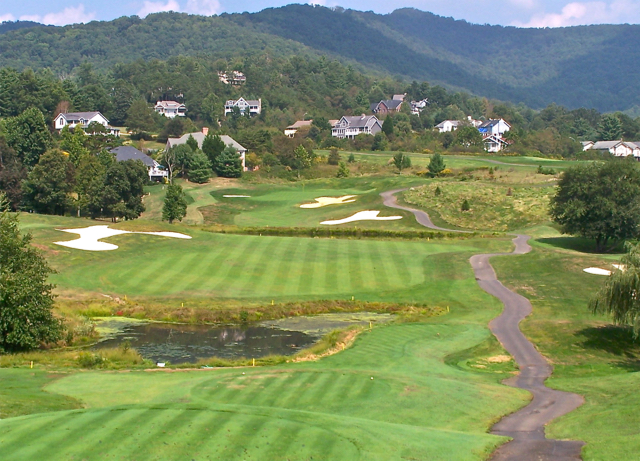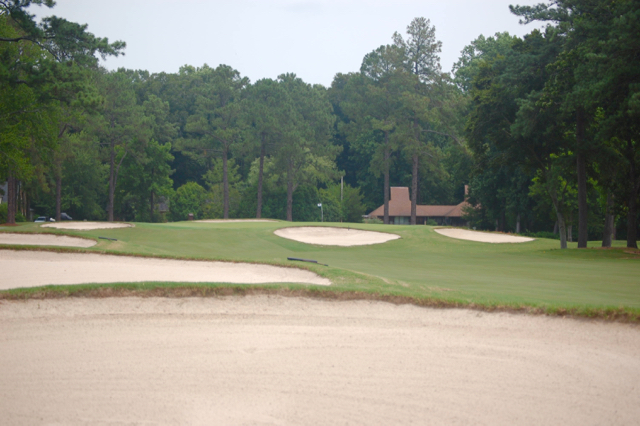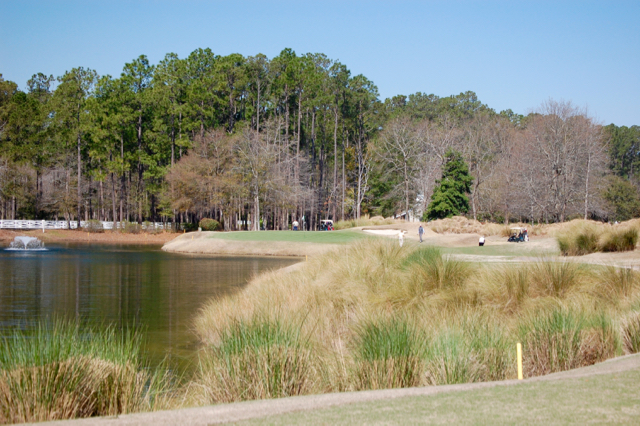Assuming you are not retired yet, do you expect to reduce your spending in retirement? Not so quick. Chances are almost 50/50 that you will increase your spending. According to the Employee Benefit Research Institute in a November 2015 report, 46% of retirees spent more in their post-retirement years than they spent just before retirement.
Overall, for all couples, household spending dropped by 5.5% in the first two years of retirement, and by 12.5% in the third and fourth years. But after the fourth year, the reductions slowed down.
For those 46% of couples whose spending increased after retirement, the number fell to 33% by the sixth year of retirement. Yet those who spent more in retirement were not just the most well-off; the increases were spread across all income levels.
Those who have purchased a golf community home in the last few years won’t be surprised that median spending on transportation fell -– by 25% -- in the first two years of retirement but that, in subsequent years, the reduction was much smaller. The couples we work with spend their first few years getting to know their neighbors in a golf community, playing a lot of golf, and finding their social lives are centered in the
CarolinaLiving.com recently published in its semi-annual magazine cost comparisons among cities and states in the Carolinas and cities and states in the rest of the U.S. Some of those comparisons are so stark that we wonder how any couple could spend more in retirement after moving from, say, Boston to Raleigh, NC; Boston’s cost of living index is 140% above the national average, while Raleigh’s is 7% below.
The following are a few additional comparisons that illustrate the often-dramatic cost savings of moving from one city to another. We’ve added the names of a few golf communities we can recommend in the destination cities; contact us if you would like more information.
(#s are Cost of Living % compared to U.S. average)
San Diego, CA +142 Charlotte, NC -4
A few nice golf communities dot Lake Norman, a half hour north of the city. Two upscale communities, The Peninsula and The Point, feature Rees Jones and Greg Norman layouts, respectively. The Point’s golf club was purchased out of near-bankruptcy by the Trump organization five years ago. River Run is a middle-price-point community also beside the lake whose Robert Walker/Ray Floyd course was refurbished a few years ago.
Boston, MA +140 Asheville, NC -1
Asheville seems to be on the target lists for baby boomers looking for a southern mountain location. The city is hip, the surrounding mountains are beautiful and the local golf communities run the gamut, from the classic and expensive Biltmore Forest to the modern and expensive Cliffs at Walnut Cove to the sharply priced Reems Creek, whose British-designed golf course is a semi-private bargain. In the Hendersonville area just a half mile away, Champion Hills and Kenmure are both excellent choices. Reems Creek golf course, outside Asheville, NC, was designed by the British firm Hawtree & Sons.
Reems Creek golf course, outside Asheville, NC, was designed by the British firm Hawtree & Sons.
Philadelphia, PA +121 Greenville, NC -6
If you have the least bit of concern about access to medical facilities, you can hardly do better than the “other” Greenville (not the one in SC), whose medical campus and adjoining facilities would be more in place in a city five times the size. The three private golf clubs in the area provide the widest range of styles: Ironwood Country Club’s course was designed by Lee Trevino and is as fun to play as Mex was to listen to; Cypress Landing lies beside the Pamlico River and its properties are bargain priced; and Brook Valley, a shot maker’s delight designed by Ellis Maples, is part of the McConnell Group, which means membership provides access to nine other outstanding clubs in the Carolinas. Greenville, NC's Brook Valley is a classic layout by Ellis Maples. Its members have access to nine other McConnell Group golf courses in the Carolinas, including Sedgefield in Greensboro and Raleigh Country Club, both designed by Donald Ross.
Greenville, NC's Brook Valley is a classic layout by Ellis Maples. Its members have access to nine other McConnell Group golf courses in the Carolinas, including Sedgefield in Greensboro and Raleigh Country Club, both designed by Donald Ross.
Seattle, WA +133 Greenville, SC -3
This is the more famous Greenville, and for good reason. Greenville is economically sound, thanks to the BMW North America plant in nearby Spartanburg; sophisticated yet artsy; and home to the beautifully landscaped Furman University. The golf communities are diverse and excellent, including the in-town Greenville Country Club (two courses, one of them a perennial top 5 in the state), Thornblade (Tom Fazio) and a few Cliffs Communities (for example, Gary Player’s Cliffs at Mountain Park course which opened in 2013 and debuted at #36 on Golfweek’s list of best residential golf courses). One par five on Gary Player's Cliffs at Mountain Park course, just outside Greenville, SC, features a tree in the middle of the par 5 fairway. Its "V" shape is only for victory if you manage to put your second shot on one side of the tree or the other.
One par five on Gary Player's Cliffs at Mountain Park course, just outside Greenville, SC, features a tree in the middle of the par 5 fairway. Its "V" shape is only for victory if you manage to put your second shot on one side of the tree or the other.
Hartford, CT +125 Aiken, SC -5
It pains me to list Hartford, where I worked for 10 productive years, but Connecticut’s cost of living is causing many of its baby boomers and young people to head for the hills (and coast). Aiken is pretty much the opposite, laid back, inexpensive and with some solid options for golf community living. Top choices include Woodside Plantation, home to three golf courses and plenty of other amenities, and Cedar Creek, a more mundane but smartly laid out community with a fine Arthur Hills layout (semi-private) and bargain-priced real estate.
Chapel Hill, NC +121 Myrtle Beach -7
This is a bit of a ringer, since Chapel Hill, one of our favorite college towns, is located smack in the Southeast region. But real estate is pretty pricey in the area, and so too are other costs. (Of course, if you are moving from, say, San Francisco -- +173% of U.S. average cost -- to Chapel Hill, it is a relative proposition.) For those considering a more coastal location, the areas around Myrtle Beach –- rather than in the heart of the town, which is a bit tourist tacky -– provide a wide range of low-cost options. Our favorite combinations of beach and golf are in the Pawleys Island area (Pawleys Plantation, Reserve at Litchfield Beach, Wachesaw Plantation) and north of the SC/NC border (Ocean Ridge Plantation, River’s Edge and many low-price options). The par 3 7th hole at Tom Fazio's Wachesaw Plantation layout does not permit of any bailout.
The par 3 7th hole at Tom Fazio's Wachesaw Plantation layout does not permit of any bailout.
We could go on, but if you would like us to run a cost of living comparison between your current home and anywhere in the South that you might be considering for your golf home in retirement, please contact us.



